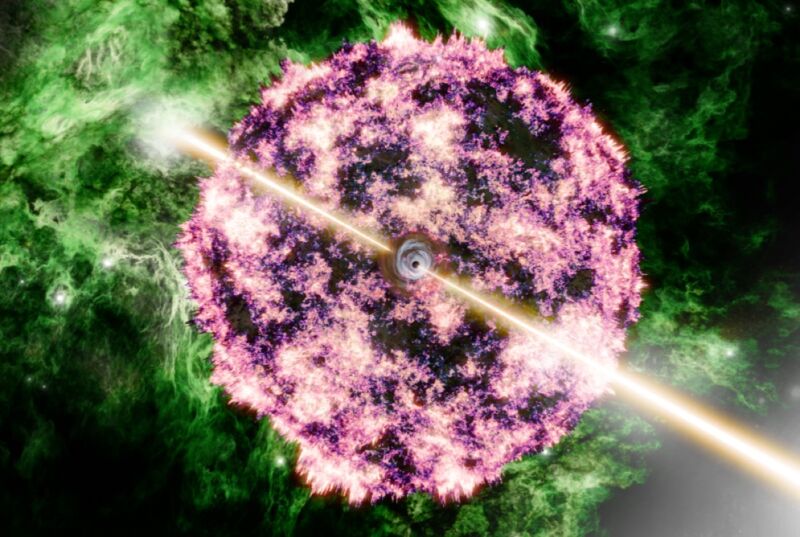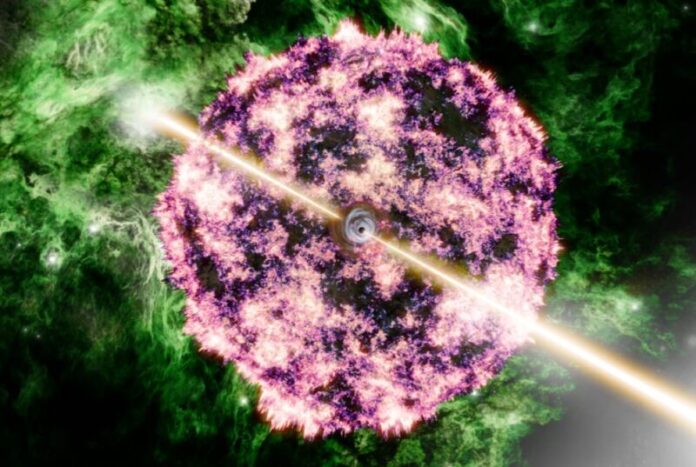
Enlarge / Artist's visualization of GRB 221009A showing the narrow relativistic jets—emerging from a central black hole—that gave rise to the brightest gamma-ray burst yet. detected. (credit: Aaron M. Geller/Northwestern/CIERA/ ITRC&DS)
In October 2022, several space-based detectors picked up a powerful gamma-ray burst so energetic that astronomers nicknamed it the BOAT (Brightest Of All Time). Now they've confirmed that the GRB came from a supernova, according to a new paper published in the journal Nature Astronomy. However, they did not find evidence of heavy elements like platinum and gold one would expect from a supernova explosion, which bears on the longstanding question of the origin of such elements in the universe.
As we've reported previously, gamma-ray bursts are extremely high-energy explosions in distant galaxies lasting between mere milliseconds to several hours. There are two classes of gamma-ray bursts. Most (70 percent) are long bursts lasting more than two seconds, often with a bright afterglow. These are usually linked to galaxies with rapid star formation. Astronomers think that long bursts are tied to the deaths of massive stars collapsing to form a neutron star or black hole (or, alternatively, a newly formed magnetar). The baby black hole would produce jets of highly energetic particles moving near the speed of light, powerful enough to pierce through the remains of the progenitor star, emitting X-rays and gamma rays.
Those gamma-ray bursts lasting less than two seconds (about 30 percent) are deemed short bursts, usually emitting from regions with very little star formation. Astronomers think these gamma-ray bursts are the result of mergers between two neutron stars, or a neutron star merging with a black hole, comprising a "kilonova." That hypothesis was confirmed in 2017 when the LIGO collaboration picked up the gravitational wave signal of two neutron stars merging, accompanied by the powerful gamma-ray bursts associated with a kilonova.
Read 7 remaining paragraphs | Comments
Ars Technica - All contentContinue reading/original-link]




